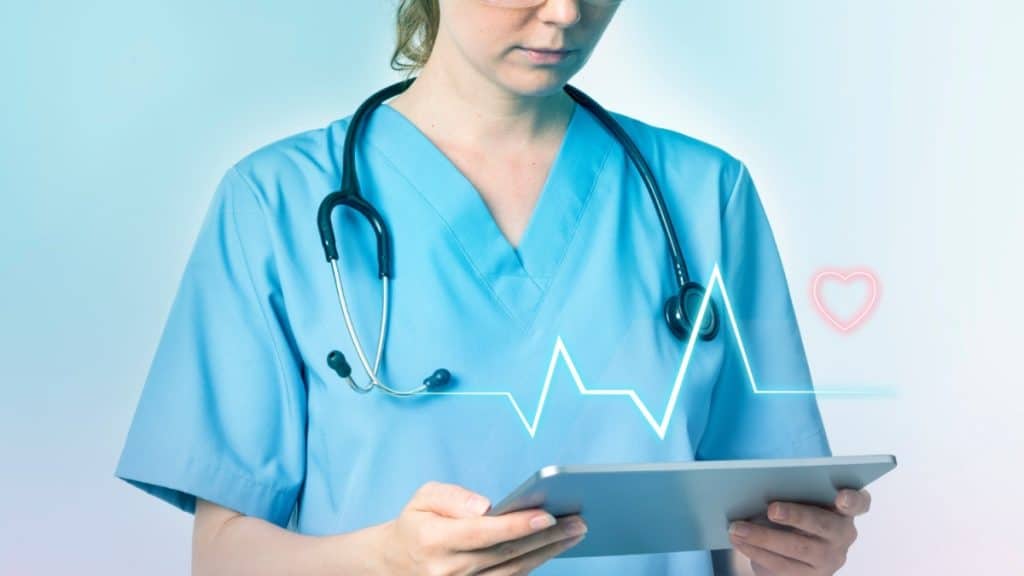Digitalization has revolutionized various industries, and healthcare is not an exception. One of the most widespread solutions is IoT for medical devices. It allows medical workers to diagnose, prevent, and treat diseases effectively. Innovations drive the demand for IoMT software and reliable companies providing telemedicine app development services.
Smart devices implementation allows medical facilities to significantly cut costs, manage patient flow efficiently, minimize unnecessary hospital visits, and improve customer experience. This article will uncover the potential of smart medical devices in the healthcare industry.
What is IoT?
Internet of Medical Things (IoMT) is the network of medical devices and software connected to the Internet for communication. It is a subset of the Internet of Things (IoT) and is often called IoT in healthcare. Such devices gather, report, and exchange patient health data remotely outside healthcare facilities. Smart connected devices are generally used for remote patient monitoring, treatment and medication management, in-depth health indicators analysis, etc. Some examples of IoMT are smart watches, wristbands, rings, sensors implanted inside the human body, smart glucometers, medication infusion pumps, and smart hospital beds.
Remote Patient Monitoring
Smart devices collect patient health data, such as temperature, blood pressure, heart rate, glucose and oxygen levels, and report it to healthcare facilities. Medical professionals then analyze the data using medical software and make diagnoses.
Remote patient monitoring solutions are crucial for timely and quality medical care. They enable preventive analyses and remote diagnostics, which allows physicians to spot early signs of diseases and start treatment early.
IoMT devices are of great help for chronically ill and elderly patients, who now don’t need to visit medical facilities for routine checkups. Basic vitals management, as well as continuous health monitoring, can be done remotely.
Smart medical devices coupled with telehealth applications allow medical professionals to provide online consultations and personalized treatment plans based on the collected data. Numerous telemedicine examples have proven to be as effective as face-to-face doctor appointments, especially for people living in remote areas or those who can’t visit the doctor’s office regularly.
Hospital Management
IoMT devices can help streamline patient flow, especially at peak times. Smart devices integrated with software solutions can provide information regarding registration forms, medical procedures, hospital admission, medical billing, and insurance processes. They can manage the patient admission process, minimize waiting times, avoid overcrowding, and enhance patient experience.
Medical facilities can utilize IoMT devices for assets, staff, and medication management. The software can help monitor the location, amount, and status of supplies and equipment, like portable monitors, defibrillators, and wheelchairs. This increases efficiency and saves time in cases of emergency, which, in turn, can potentially save lives.
Besides medical supplies, smart meters and sensors can also manage water and power consumption, utility expenditures, food and medicine supplies, etc.
Medication Management
Adherence to the prescribed medication regimen is essential for quick recovery. Smart connected devices monitor drug intake, send reminders to take medication on time, or notify a patient if they have missed a dose. The apps can also alert caregivers or medical staff about the patient’s medication intake or missing doses to guarantee continuity of care. This can also be helpful during checkups at the hospital, as the doctors can see the medication history, evaluate the effectiveness of drugs, and adjust treatment plans accordingly.
Final Thoughts
As you can see, adopting IoMT devices brings numerous benefits, such as cost reduction, real-time remote health monitoring and medical assistance, and easier patient flow management. The implementation also provides opportunities for more efficient scheduling and allocation of medical professionals and equipment management.
However, when implementing smart connected devices, you must consider associated challenges, such as cybersecurity breaches and data theft risks. Another consideration is regulatory compliance needed to guarantee privacy and secure data storage, management, and exchange. It’s also vital to bear in mind the up-front infrastructure costs, which can be pretty high.
Despite substantial investments and potential integration challenges, IoT for medical devices will streamline your workflow, ensure more efficient use of resources, and enhance customer satisfaction in the long run.

